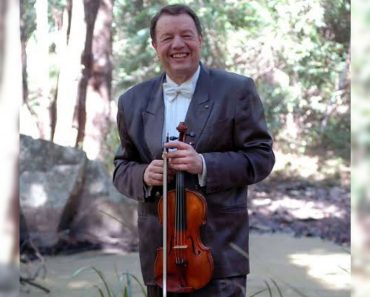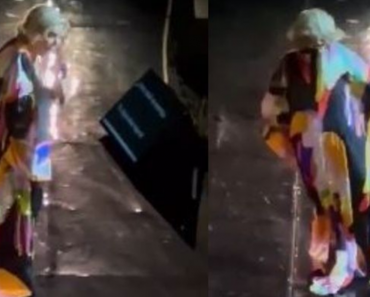By Dana Al-Tajer and Jade Barnes
The Tiger Lillies are a band like no other, known for their unique blend of dark cabaret, punk, and avant-garde music. Since their formation in 1989, they’ve captivated audiences with haunting melodies, unconventional instruments, and dramatic stage presence. The trio—led by vocalist and accordion player Martyn Jacques—embraces an eclectic mix of influences, from Berlin cabaret to punk rock. Their macabre style has earned them a cult following and critical acclaim across the globe.
I greet Adrian and thank him again for agreeing to the interview, and then jump right in with my first question.
“Your sound has been described as the ‘macabre magic of prewar Berlin with the savage edge of punk.’ Based on this description, how do you think your creative process has evolved over the years?” I ask.
Adrian explains that creating music is an ongoing process, almost imperceptible at times. A lot of their sound comes from Martyn’s influences—Berlin cabaret, Bertolt Brecht—described as “jazz mixed with social commentary.” He continues, saying Martyn enjoys combining slightly out-of-tune instruments with talking about society’s margins.
…creating music is an ongoing process, almost imperceptible at times. A lot of their sound comes from Martyn’s influences—Berlin cabaret, Bertolt Brecht—described as “jazz mixed with social commentary.”
“When we started, it was just drums, accordion, and double bass—the smallest unit we could use to survive. No amplifiers, keyboards, guitars, or roadies—just street musicians.” Adrian explains that their early days in pubs and folk clubs shaped their sound. “We didn’t have the chance to develop until we played in theaters in Germany, where seated audiences allowed us to stretch musically.”
I agree with Adrian about how venue impacts sound and ask, “As your process evolved, which other instruments did you expand to using?”
Adrian responds, “Martyn primarily sings and accompanies himself on the piano now. He used to use a small acoustic guitar, but now I switch between instruments. I’ve picked up things like the theremin, musical saw, jaw harp, and a Greek bağlama. Budi, our drummer, makes custom percussion instruments, and in the studio, we use organs and electric guitars.”
… I’ve picked up things like the theremin, musical saw, jaw harp, and a Greek bağlama.
We discuss their use of harmonium and celeste on their album The Sea. I joke about the Harry Potter-like sounds of these instruments, leading into my next question: “You’ve cited many influences, but is there a musical tradition you’ve yet to explore?”
Adrian answers, “We’ve done Greek music, a French song inspired by Edith Piaf, American styles like Cole Porter. We tend to strip things down to their essentials. We’ve done Mozart with an orchestra and electronic music. I’d love to do Klezmer someday—it’s really cool.”
Agreeing that Klezmer is fascinating, I shift to their visual presentation. “Your look is iconic—a mix of Berlin cabaret and surrealism. How do these choices influence your performances?”
Adrian says their visuals create a focus, giving them the frame of mind to transport audiences to an unusual state. “Instead of being in character, it’s like becoming the look you represent—it develops out of theater.”
I ask if their visuals adapt to new themes, and Adrian confirms. “We’re doing Macbeth in Barcelona soon, so I guess we’re witches now. I’m not sure what our interpretation will be—maybe more grounded in reality.”
He continues, explaining that early in his career, he played in bands that did cover songs, but eventually, he had to decide between that and something original. “The whole point of The Tiger Lillies is to be original. We’ve always tried to look interesting and be ourselves.”
I agree that originality is key and shift the conversation to their upcoming performance at the Gala Theatre in Durham. Adrian admits he hasn’t thought much about Durham as opposed to other tour destinations but asks for recommendations. I point him toward Durham Cathedral and mention how nice the city centre is to walk around. Adrian notes they’ll arrive early on Friday to explore, which is rare during their busy tour schedule.
Next, I ask about the nihilistic themes in their shows. “How do you personally grapple with that philosophy in your performances?” Adrian laughs, explaining that the “lessons in nihilism” is partly a gag. He sees how their songs reflect chaos and meaninglessness but says they’re more pragmatists than nihilists. “Maybe lessons in cynicism is more appropriate. We look at things people shy away from and try to find positivity in the chaos.”
“Maybe lessons in cynicism is more appropriate. We look at things people shy away from and try to find positivity in the chaos.”
I then ask about touring, particularly any unexpected audience reactions. Adrian admits, “People do walk out sometimes, which is their choice. We deal with subjects that can be triggering, but we’re not laughing at suffering. Some therapists and priests have praised us for acknowledging difficult topics rather than ignoring them. What surprises us most is when we get a huge positive reaction—like when 40,000 people in Tbilisi loved it.”
For my final question, I ask about performing in Ukraine during the war. Adrian shares that performing in Ukraine was emotionally tough, with air raids and the sound of missiles in the background. On their second visit, they played at a hospital in Lviv where people were being fitted with prosthetics, including children and women. “It was heavy, but also rewarding. We played some songs for them—it was very emotional.”
I thank Adrian for his candid answers, ending the interview on a more reflective note. He offers some advice: “It takes a long time to figure things out as a musician. I joined this band at 27 after trying everything—jazz, cover bands, rock, folk. I’m still messing around with it. That’s the beauty of music—it never ends.”
I find that a perfect place to close off the interview, giving my thanks again to Adrian for the chat, and finish off the interview having learnt some very interesting things about the band.
Image credit: Ricardo Abriz








